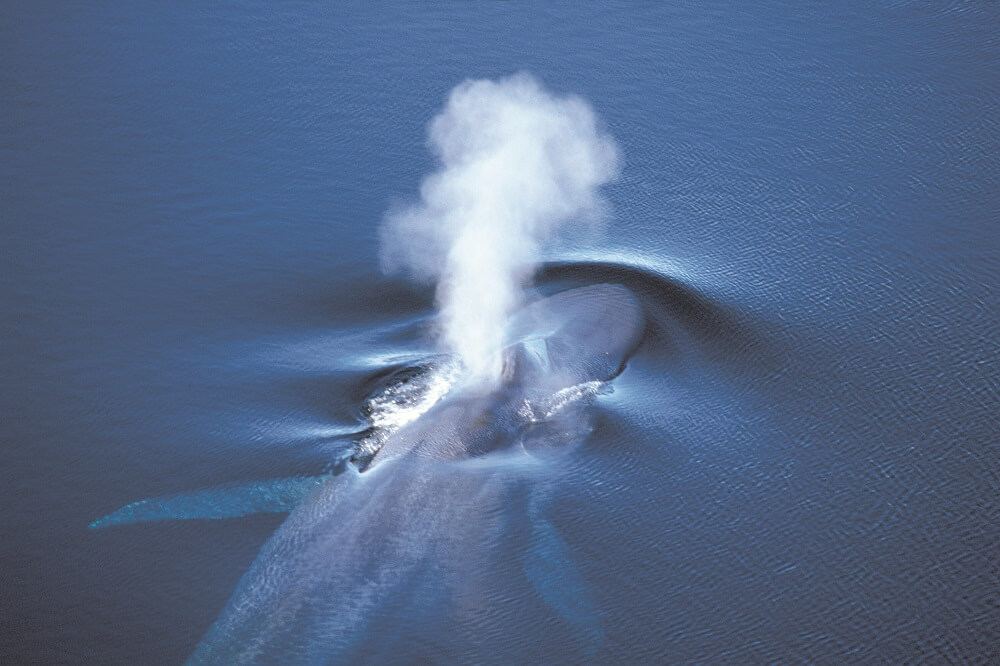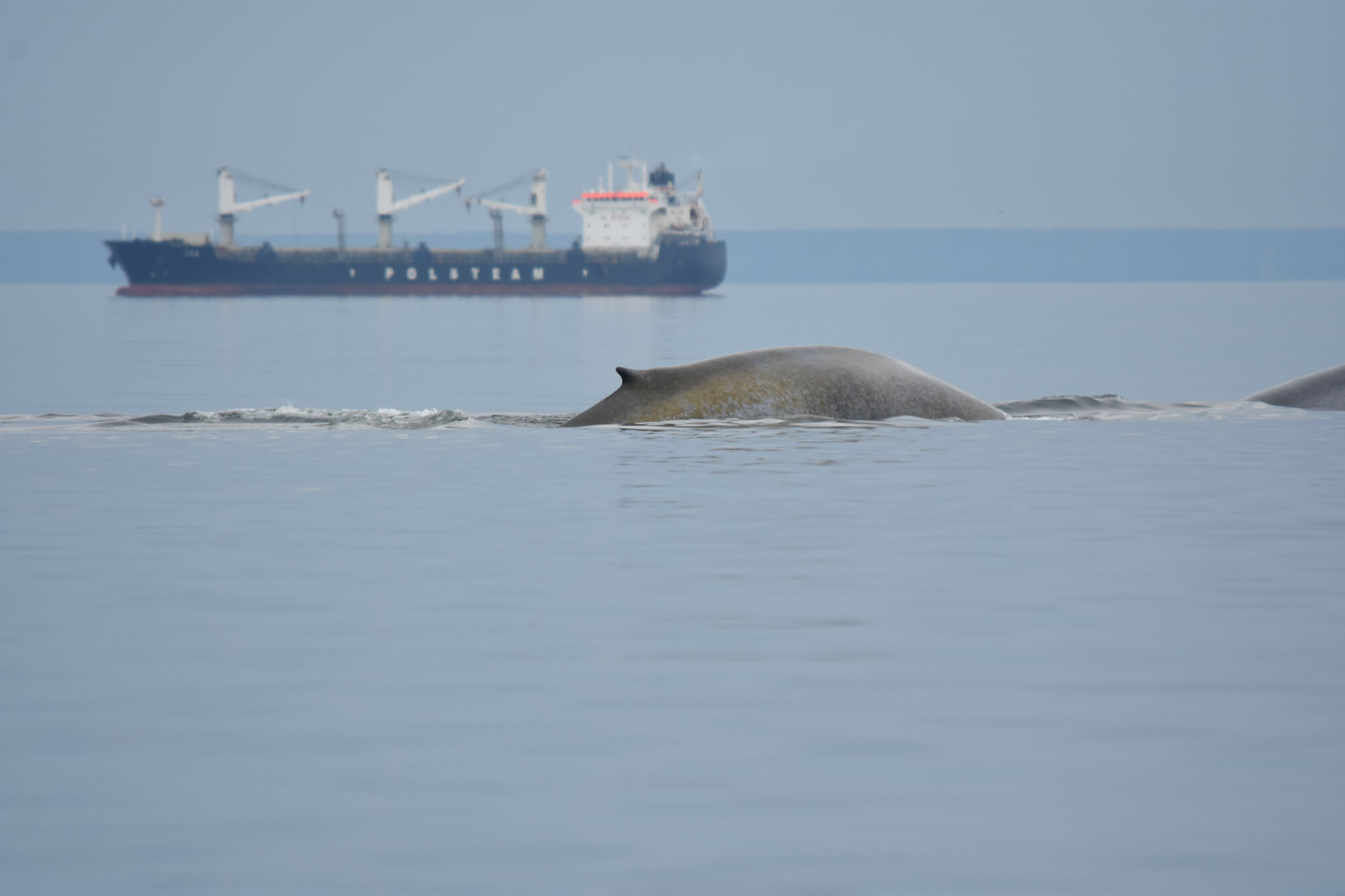A new study published in Experimental Biology showed that military sonar can affect the behaviour of the blue whales studied off the coast of California. When exposed to the sound of military mid-frequency sonar (1–10 kHz), nearly half of the tagged blue whales feeding in deep water changed their trajectory or stopped feeding. This type of sonar is used around the world, including in Canadian waters, generally to detect submarines and mines. Frequent exposure to these sounds is of concern for blue whales, as frequent interruptions in feeding and the whales’ sudden fleeing may affect their health.
What About the Big Blues of the St. Lawrence?
The blue whales in the St. Lawrence River are considered part of the Northwest Atlantic population, which is different from the population studied off California. However, the Northwest Atlantic population is also exposed to sonar in some areas of its territory. And since this population is endangered, could this disturbance affect its recovery?
Estimated at fewer than 250 individuals in 2002, this population faces several threats, such as contamination of water and prey, collisions with ships and, most importantly, noise pollution. Maritime transport, seismic exploration and, to a lesser extent, sonar are the main sources of noise pollution affecting these whales.
“Seismic exploration and maritime traffic are greater threats for Northwest Atlantic blue whales than military sonar,” states Christopher Clark, a marine acoustics scientist.
Using mid-frequency sonar for military training is more frequent on the western coast of North American than on its eastern coast, meaning military sonar is not as present in the Northwest Atlantic. According to Christopher Clark, the blue whales on the east coast stay farther offshore than those in California. California’s steep coastlines allow whales to get closer to the sonar, possibly exposing them to higher intensity sounds.
In the case of Northwest Atlantic whales, seismic exploration would be a more significant threat, as the sounds of compressed-air guns used for seismic exploration can travel great distances. Christopher Clark describes the ocean as “transparent” to the sounds of these guns. As a matter of fact, “the explosions from seismic exploration surveys off Nova Scotia, Ireland and Brazil can be hear throughout the most of the North Atlantic Ocean,” Clark explains.
The frequencies of these sounds, among other things, are what allow them to travel so far. Compressed-air guns produce low-frequency sounds (primarily below 100 Hz) that can penetrate the earth’s crust to detect evidence of oil and natural gas. However, these frequencies completely overlap the sounds produced by blue whales (generally between 15 Hz and 100 Hz). So the sounds emitted by air guns can interfere with their communication and influence their behaviour. For example, blue whales were observed producing more calls on days when seismic exploration was taking place in the area than on days without seismic exploration. A logical explanation for this blue whales response is that they produced more calls to increase their chances of being heard by other individuals of their group. But during other studies, blue whales have been observed reducing or not modifying the frequency of their calls during seismic exploration.
Other effects may also be attributed to seismic exploration. For example, blue whales may move away from the source of noise. The mammal then uses its energy and time to flee rather than to feed, reproduce and socialize. In addition, the power of the sounds could injure the animal and cause temporary or permanent hearing loss.
Heavy maritime traffic
The steady increase in maritime traffic is also a concern for the recovery of this blue whale population. Most of the ships used in this industry also produce low-frequency sounds. For example, the St. Lawrence River is an area of heavy maritime traffic, and according to a study published in the Journal of the Acoustical Society of America, blue whales frequenting this area produce more varied frequencies of sounds than in other parts of the Atlantic. The authors noted that these blue whales would possibly modify their vocalizations so that they could be heard by their fellow creatures despite the noise pollution.
Although the sound of military sonar can affect blue whale behaviour, seismic exploration and maritime traffic are more significant threats to this species. To help this endangered population recover, seismic exploration periods could be planned to avoid cetacean migration periods. Noise pollution is a pervasive threat that could be mitigated rather quickly. Indeed, when a noise source is no longer present, the pollution caused by the noise in question stops immediately.







